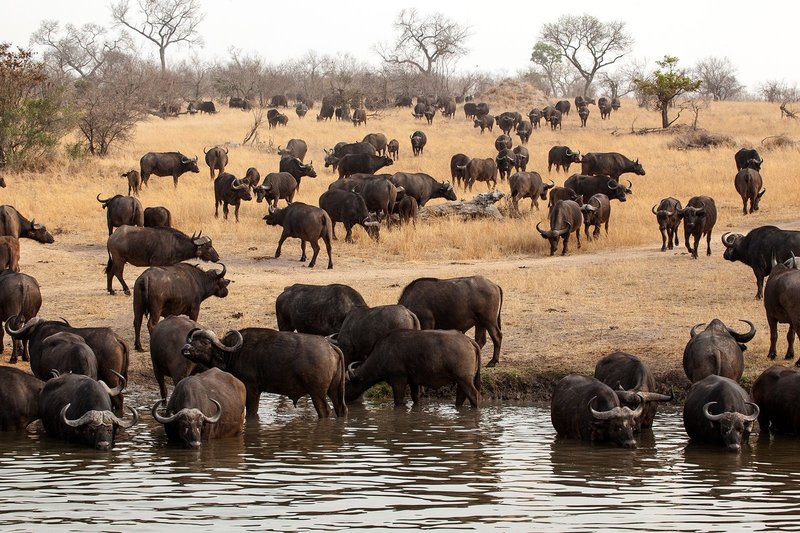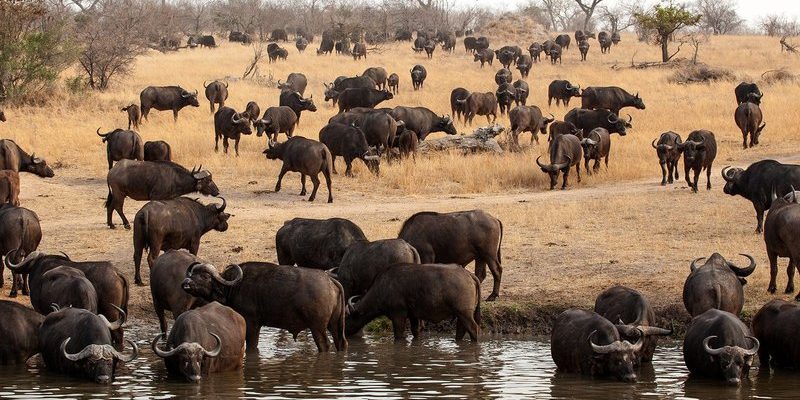
Let’s break it down. Buffalos—whether you’re thinking about the American bison or the water buffalo from Asia—have unique habitats that reflect their needs and behaviors. Knowing where they thrive can help us appreciate these magnificent animals even more! So grab a comfy chair, and let’s explore the world of buffalos together.
The Different Types of Buffalos
Before we get into where buffalos live, it’s important to know the two main types: the American bison and the water buffalo.
- American Bison: Commonly known as buffalos in the United States, these animals are large, with shaggy coats and curved horns. They primarily inhabit the North American plains.
- Water Buffalo: These are more commonly found in Southeast Asia and are often seen in rice paddies. Their adaptability to both wet and dry environments makes them quite unique.
Both types of buffalos play crucial roles in their ecosystems, from maintaining grasslands to aiding in agriculture. Understanding their differences sets the stage for exploring their habitats.
Habitat of the American Bison
The American bison primarily roams the Great Plains of North America, encompassing areas from Canada down to Texas. Picture the wide-open spaces filled with golden grasses and wildflowers; it’s the perfect landscape for these grazers.
Bison prefer flat or gently rolling landscapes and can often be found in national parks and wildlife reserves. Places like Yellowstone National Park are famous for their bison herds. Here, they enjoy vast stretches of land where they can graze and socialize. You might be wondering about their seasonal habits — bison often migrate in search of food, so their habitat isn’t fixed to one location.
In addition to grasslands, bison occasionally wander into wooded areas and river valleys. These habitats provide shelter from extreme weather and access to water. Honestly, if you ever get a chance to visit a national park where bison roam, the sight is breathtaking!
Habitat of the Water Buffalo
On the other side of the world, the water buffalo finds its home in countries like India, Vietnam, and the Philippines. Their favorite spots are wetlands, marshes, and even rice paddies. These buffalo are well-adapted to living in muddy environments, and you might often see them wallowing in water to keep cool and protect their skin from sunburn.
Water buffaloes are crucial for traditional farming in many Asian countries. Farmers rely on them for plowing fields and transporting goods. Their ability to thrive in waterlogged areas makes them invaluable in rice cultivation, where they help turn the soil and keep pests at bay. It’s fascinating to see how they contribute to human agriculture while living in their ideal habitat.
Distribution of Buffalos Globally
When it comes to distribution, the American bison is primarily found in North America. However, they once roamed across much of the continent. Today, efforts to conserve their populations have allowed bison to flourish again, especially in protected areas.
In contrast, the water buffalo has a different story. You’ll find them spread across southern Asia, from India to Indonesia. They are also present in some Mediterranean countries, where they were introduced for farming purposes. This adaptability speaks volumes about their resilience and importance in agriculture.
Interestingly, buffalos are also found in small populations in zoos and wildlife preserves around the world. These settings help educate the public about their behaviors and conservation needs. So, while you might not encounter them roaming in your neighborhood, they are more widespread than you might think!
Choosing the Right Habitat: Why It Matters
Why do buffalos prefer specific habitats? For one, their diet plays a crucial role. Buffalos are herbivores and thrive on grasses and aquatic plants. Their habitat is rich in these food sources, ensuring they have enough to eat to sustain their massive bodies.
Additionally, buffalos need space to roam. In the wild, they can travel long distances in search of food and water. Healthy ecosystems rely on these migratory patterns. When buffalo populations are restricted by habitat loss, it can lead to overgrazing and negatively impact the environment.
You might be wondering about the impact of climate change on these habitats. As weather patterns shift, it could affect the availability of food and water, forcing buffalos to adapt or migrate. This makes conserving their natural habitats even more critical.
Conservation Efforts for Buffalos
Speaking of conservation, buffalos have faced significant challenges due to habitat loss and hunting. In the 1800s, millions of bison were killed, nearly driving them to extinction. Thankfully, conservation efforts have made a difference.
Today, organizations and national parks work tirelessly to protect both American bison and water buffalo populations. These efforts include:
- Creating protected lands for buffalo herds.
- Educating the public about their importance to ecosystems.
- Implementing breeding programs to increase populations.
Individuals can also contribute to conservation by supporting wildlife organizations or visiting national parks. When you pay an entrance fee, you help fund conservation work that protects these majestic animals and their habitats.
The Future of Buffalos: What Lies Ahead
Looking ahead, the survival of buffalos hinges on our understanding and support for their natural habitats. With changing climates and increasing human activity, it’s essential to maintain their spaces.
Restoration projects aim to bring back native grasses and waters, helping buffalos thrive. If we each play a part—whether through advocacy, education, or simply appreciating these creatures in their natural environments—we can ensure future generations can enjoy seeing buffalos in the wild.
In summary, buffalos, both the American bison and water buffalo, live in distinct habitats that reflect their needs. From the plains of North America to the wetlands of Asia, their homes are crucial for their survival and the health of our ecosystems. By understanding where buffalos live, we can better appreciate them and work together to protect their future.

